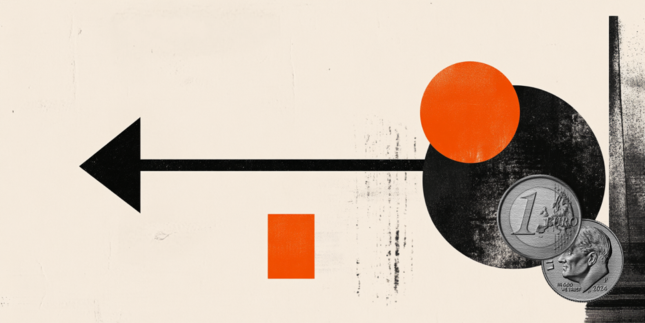Employment
The Canadian economy lost 19.7K jobs for the month of April, its worst drop in employment in eight months. That’s way worse than the projected 4.5K decline and enough to erase most of the previous month’s 28.7K gain. But don’t let the dismal headline figure fool ya! Underlying components of the jobs report actually reflect significant improvements in the country’s labor situation.Full-time hiring jumped by an impressive 46.9K in April but this was offset by the 66.5K tumble in part-time positions, spurred mostly by layoffs in the retail and construction sectors. Apparently, store closures of Target and Best Buy Canada were to blame for the sharp drop in part-time employment, which analysts dismissed as a one-off factor.
The natural resources industry, which has seen consecutive months of negative jobs figures due to the oil price slump, started to show signs of life. In Alberta, the gold mine of oil production in Canada, overall employment picked up by 12.5K in April. While oil companies in this region still shed roughly 3.5K jobs during the period, the pace of job declines has been steadily slowing and may have already bottomed out.
Consumer Spending
The latest Canadian retail sales report was more upbeat than a Carly Rae Jepsen song, as headline consumer spending surged by a whopping 1.7% in February while core retail sales jumped by 2.0%. This came after consecutive declines in January and December, indicating that cold weather conditions no longer prevented Canadians from shopping.In fact, all 11 retail sub-sectors reported gains for the month, led by the 5.6% increase in general merchandise sales. The report also indicated that Canadians spent more on food, drinks, and gas, although a part of these gains could be attributed to the price increases spurred by the Loonie’s depreciation then.
Business Conditions
Business activity also saw green shoots, particularly in the manufacturing industry. The April Ivey PMI reading landed at 58.2, much higher than the projected 50.1 figure and miles away from the previous 47.9 figure. This reflects a faster than expected pace of growth in the industry, which had been contracting for the past three months, and followed the stronger than expected 2.9% rebound in manufacturing sales for March.Trade activity is still lagging behind though, with the March trade balance printing a 3.0 billion CAD deficit and the February report revised to show a larger shortfall of 2.2 billion CAD versus the initially reported 1.0 billion CAD deficit. Components of the March report showed a 2.2% increase in imports and a measly 0.4% uptick in exports, as shipments of petroleum and crude oil dragged volumes down.
Interestingly enough, exports to the U.S. slipped 0.9% and reflected a lower degree of dependency on Canada’s oil sector. After all, the U.S. has been able to ramp up its fracking operations and replenish some of its own oil stockpiles these days. Now this could be a market trend to watch out for, as roughly 65% of Canada’s exports used to be purchased by Uncle Sam.
Inflation
Remember when the BOC announced a surprise rate cut to shield the economy from sharper declines in price levels? Well, its looks like their plan worked like a charm, as Canada managed to print stronger than expected CPI readings for March. It also helped that the Loonie had been steadily retreating against its forex rivals then, contributing to the upward pressure in price levels.Headline inflation improved from 1.0% to 1.2% while core CPI shot up to 2.4%, its highest level in over six years. Most of the eight major components of the CPI figure reported gains while the transportation sector showed a 3.9% decline in costs, reflecting how the downturn in energy prices has still been evident.
Moving forward, economic hotshots predict that price gains might be subdued, as the Canadian dollar has regained a lot of ground in the forex market. Nonetheless, BOC Governor Poloz and his men seemed satisfied about the progress made by the Canadian economy since they hinted that they’re no longer looking to cut interest rates again.
Even though the latest batch of reports from Canada seem to suggest that the worst might already be over and that the oil industry is eyeing a recovery, the Loonie’s forex price action could still hinge mostly on whether or not upcoming economic releases confirm the positive trends.
Recommended Content
Editors’ Picks

Gold sits at record highs above $3,000 on escalating geopolitical tensions
Gold price is sitting at record highs beyond $3,000 early Tuesday on intensifying geopolitical Middle East tensions. Israel resumes military operations against Hamas in Gaza after the group rejected US proposals for extending ceasefire. Further US-Iran tensions add to the latest leg up in the safe-haven Gold.

EUR/USD drops to test 1.0900 ahead of German vote on spending plans
EUR/USD tunrs loswer ro near 1.0900 in early Europe on Tuesday. Escalating Middle East tensions and EU-US tariff war lift the US Dollar and weigh on the pair. Meanwhile, Euro buyers stay defensive ahead of the German vote on the fiscal spending plans.

GBP/USD falls toward 1.2950 as US Dollar rebounds on cautious markets
GBP/USD falls back toward 1.2950 in the early European trading hours on Tuesday. The pair faces headwinds from a renewed US Dollar uptick as investors run for cover amid intensifying trade and geopolitical jitters. The focus stays on mid-tier US data and Middle East tensions.

Ethereum consolidates below $2,000 as Standard Chartered alters its prediction for 2025
Ethereum remained just below $2,000 in the Asian session on Tuesday as Standard Chartered's Global Head of Digital Assets Research, Geoffrey Kendrick, updated the bank's 2025 price forecast for ETH.

Five Fundamentals for the week: Fed leads central bank parade as uncertainty remains extreme Premium
Central bank bonanza – perhaps its is not as exciting as comments from the White House, but central banks still have sway. They have a chance to share insights about the impact of tariffs, especially when they come from the world's most powerful central bank, the Fed.

The Best brokers to trade EUR/USD
SPONSORED Discover the top brokers for trading EUR/USD in 2025. Our list features brokers with competitive spreads, fast execution, and powerful platforms. Whether you're a beginner or an expert, find the right partner to navigate the dynamic Forex market.